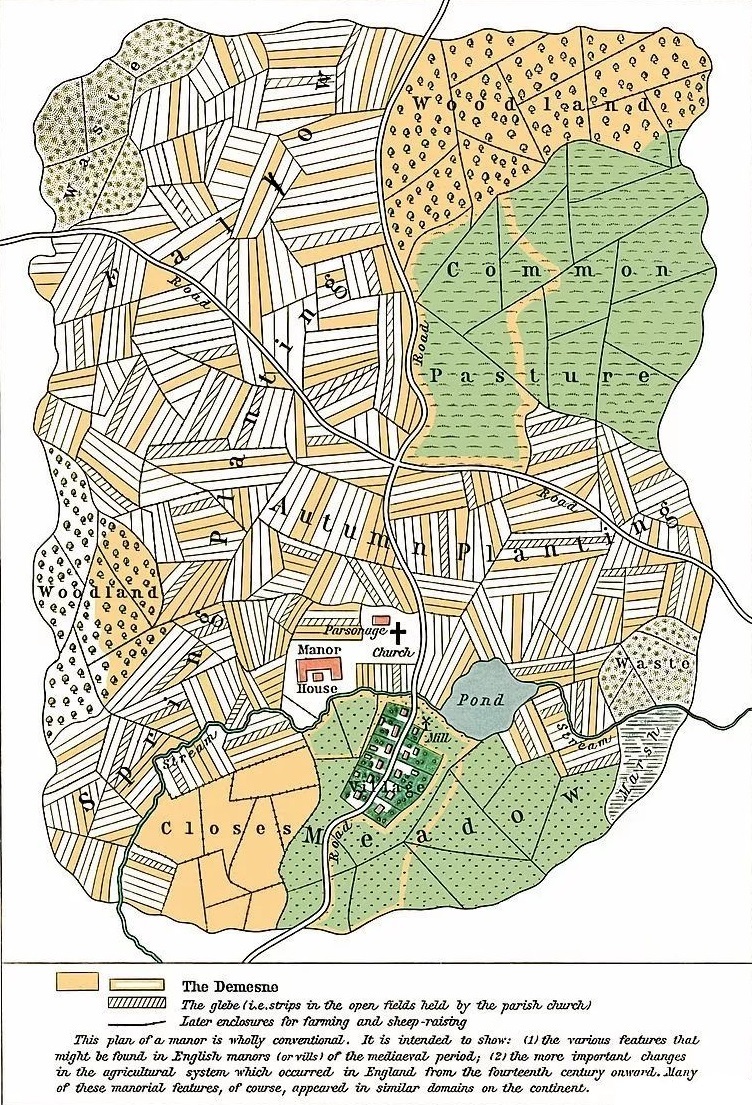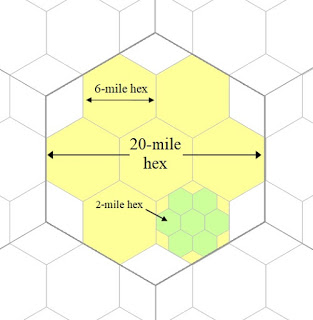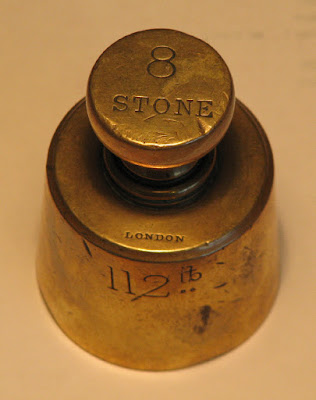Difference between revisions of "Measurements"
Tao alexis (talk | contribs) |
Tao alexis (talk | contribs) |
||
| Line 97: | Line 97: | ||
'''Ounce:''' a measure equal to 16 drams or 437½ grains. Used to measure hundreds of different materials and foodstuffs. | '''Ounce:''' a measure equal to 16 drams or 437½ grains. Used to measure hundreds of different materials and foodstuffs. | ||
| − | '''Pennyweight:''' equal to 24 grains or 6 carats. Slightly less weight than the dram. Used only in the measure of precious metals. Jewellers, lapidaries and engravers prefer to use the pennyweight over the dram. A gold coin weighs 2.091 pennyweight. | + | '''Pennyweight:''' a measure equal to 24 grains or 6 carats. Slightly less weight than the dram. Used only in the measure of precious metals. Jewellers, lapidaries and engravers prefer to use the pennyweight over the dram. A gold coin weighs 2.091 pennyweight. |
| + | |||
| + | '''Pound:''' a measure equal to 16 ounces, 64 drams or 7,000 grains. The standard unit of weight for most heavy objects and for calculating [[Encumbrance|encumbrance]]. | ||
Revision as of 21:07, 22 July 2021
The D&D campaign uses a wide variety of unfamiliar, archaic units of measure with which most players are unfamiliar. Units that are used in Alexis' World are defined and compared below, for the benefit of players in that world. These correspond to common measurements in the 17th century, the approximate time of Alexis' campaign as it relates to Earth's history. Therefore, these measurements are "imperial" in nature and not metric. Metric equivalents are not given, since they would not exist in the minds of characters at the time; additionally, there is something to be said for requiring the player's minds to think in measuring objects in the same way that people did once upon a time. Units are divided according to what is measured.
Contents
Mapmaking & Distances
| Type | Diameter | Area | Population if density is 60 persons per acre | |||||
|---|---|---|---|---|---|---|---|---|
| miles | yards | feet | sq.miles | blocks | acres | sq.ft | ||
| 20-mile hex | 20 | 35,200 | 105,600 | 346.41 | 58,963 | 221,702 | 9,657,361,047 | 13,302,144 |
| 6-mile hex | 6.667 | 11,733 | 35,200 | 38.494 | 6,552 | 24,636 | 1,073,040,116 | 1,478,170 |
| 2-mile hex | 2.222 | 3,911 | 11,733 | 4.276 | 728 | 2,737 | 119,219,905 | 164,198 |
| Land hex | 0.741 | 1,304 | 3,911 | 0.476 | 81 | 305 | 13,246,656 | 18,278 |
| Village hex | 0.247 | 435 | 1,304 | 0.0528 | 9 | 33.8 | 1,472,603 | 2,028 |
| Block | 0.0823 | 145 | 435 | 0.00587 | 1 | 3.76 | 163,874 | 225 |
| Sub-block | 0.0274 | 48.3 | 145 | 0.00065 | 0.11 | 0.416 | 18,208 | 25 |
| Lot | 0.00914 | 16.1 | 48 | 0.0000723 | 0.0123 | 0.0463 | 1,995 | 2.8 |
| Plot | 0.00305 | 5.4 | 16 | 0.00000806 | 0.0014 | 0.0052 | 222 | 0.31 |
| Combat hex | 0.00102 | 1.8 | 5 | 9.01E-07 | 0.0002 | 0.0006 | 21.7 | 0.03 |
The huge expanse of the world is mapped in 20 mile hexes, which provides a convenient size for measuring steady travel by land or sea, transport distances and population density. Since a hexagon can be easily broken into groups of seven hexagons (with six one-third pieces around the edge), we can build a mapmaking process that progressively expands the game world, as shown in the diagram.
Since each hex is subdivided by 3 hexes in diameter, and 9 hexes by area, the chart on the left indicates a set of "map sizes" that enables simple transference from one size to the next. The dimensions of each size of hex are given as a short-hand to describe each size of map. Although a "6-mile hex map" actually has hexes that are 6.667 miles across, the misnomer is easy to use than would be something more accurate.
Six-mile hex maps are used to provide regional-sized maps, when depicting the provinces inside a large country, or when the country itself is comparatively small (less than 4,000 square miles).
Two-mile hex maps are used to provide local details surrounding player lands and adventures. One 2-mile hex contains about 30 hides.
Land

Acre: describes land that is one chain in width and one furlong in length. This width equals the space required by eight furrows; the length equals the point when a pair of oxen need resting. It is therefore the best use of the oxen's strength, as the animals can be driven for a furlong, then turned at the maximum point (a difficult procedure) and brought in line at the same time they are effectively rested before driving the next furrow. Therefore, all plowed land was measured in strips of this dimension, as opposed to more squarish shapes that would require unnecessary turning of the owner's oxen. The acre also represents the total are that can be effectively plowed by one team of two oxen in the space of one day.
Bovate: also called an oxgang or oxgait, an area of 15 acres, the practical amount of land that a single ox can plough in one season, in time to plant crops. Cottagers and poor villeins will have one bovate to work on, which typically they don't own and cannot dispose of freely.
Carucate: also called a ploughgate, an area of 120 acres, or four virgates. The carucate's acreage describes the fertile land comprised by the allotment; an actual carucate may consist of many more acres (the number varies depending on the region) of land that is impractical to plough. This allotment can be usefully equated to certain definitions of a hide.
Hide: a measure of value and tax assessment for freeholders who own land. Formerly, this tax included rendering food as tribute to members of nobility, but in the 17th century tax is usually paid in coin. In times of need, a hide may yet be required to supply a combatant to the nation's fyrd, or manpower for the army. Land taxes are typically 10-15% of the value of the land to be paid per year. A hide will consist of between 60 and 120 acres (two to four virgates), depending on the fertility of the soil, as the true measure is the production of approximately 1,620 bushels of grain yearly.
Virgate: also a yardland or yard of land, an area of 30 acres, or 2 bovates. This is the practical amount of land that a pair of oxen can plough in one season, in time to plant crops. The term "yardland" is etymologically unrelated to the yard of land around a dwelling. Villeins will keep tilled land equal to a virgate, which they don't own and of which they cannot freely dispose.
Hundred
An association of 80 to 100 hides, commonly with a loose geographical grouping, consisting of between 40 and 100 square miles (including untilled land). Theoretically able to supply or support 100 men under arms (a "company"). Multiple companies are grouped together to form political "lathes," which are in turn subdivisions of "counties, each of unfixed sizes." Full-sized manor estates consist of land equal to a hundred (though many older manors are small through the sale of land to pay rents).
Knight's Fee
Land consisting of 5 hides, commonly made up of marginal ploughland with little waste and equally 600 to 640 acres, or one square mile. This area will be contiguous, but often snaking through a strategic valley or upon one side of a river upon a county or kingdom's border. In addition to the knight dwelling upon the land, an additional retinue of 25 equipped soldiers are supposed to keep their homes on the Fee.
Area & Length
Chain: a distance of 4 rods, 22 yards or 66 ft. A chain is the width that results from eight ploughed furrows. An acre for farming is ideally measured as 76 furrows side-by-side, with each furrow being one furlong in length (10 chains). The name comes from the use of metal chains that are 66 ft. long, carried by surveyors in their work. These chains are hooked to a three foot metal spike that is pounded into the ground, so that the chain can be pulled taut in measuring.
Combat hex: a map-hex used on a battlemap, 5 ft. in diameter (21.7 sq.ft.).
Foot (ft.): a distance of 12 inches, based upon the averaged foot length of 16 random adult males, as described by Jacob Köbel in the 16th century in his book, Geometrei.
Furlong: a distance of 10 chains, 40 rods, 220 yards or 880 ft. Viewed widely as the furthest distance a team of oxen should plough a straight furrow before needing a rest, at which point the oxen are turned. Turning a team of oxen is hard, difficult work for the farmer. Therefore, the furrow describes the length of an acre, while a chain describes its with (one furlong by one chain equals one acre). The furlong is a popular unit of measure for horse and foot racing.
Hand: the width of a human hand, typically 4 inches; the unit of measure is used most commonly to denote the height of horses, low walls and common agricultural structures.
Inch (in.): the length of 3 barleycorns end-to-end; also approximately the average width of a labourer's thumb. 12 inches equals 1 foot.
League: a distance of 3 nautical miles, though sometimes used to describe three miles on land. At sea, a league is 3.452 miles. The nautical measurement is commonly a comfortable distance an everyday human can walk in an hour.
Mile: A distance of 1,760 yards or 5,280 feet. In area, a square mile equals 640 acres, the equivalent of about seven hides. Land is not officially measured in miles in the game world, but miles are always used to express road distances. A mile also describes a distance of 8 furlongs and 80 chains.
Nautical mile: a distance used for maritime navigation and never on land. The nautical mile equals 6,076 feet. A Knot measures a speed of 1 nautical mile per hour; this number is derived by using a knotted rope, with knots separated by 47 feet, 3 inches, and a 30-second sand glass, in order to calculate a boat or ship's speed. Knots are also used to calculate wind speed at sea.
Rod: a distance of 5½ yards or 16½ feet. Used as a measurement in farming; one acre is 4 by 40 rods (one chain by one furlong). Since long furrows reduce the need to turn a team of oxen, this was done only when the oxen needed to rest. Typically, a rod equals a width of 19 furrows.
Square foot: a small area that's 1 foot by 1 foot (144 sq.in.).
Square yard: an area 1 yard by 1 yard (9 sq.ft.). Standard as a cloth measure.
Yard: a distance of 3 feet or 36 inches. Rarely used in common practice.
Mass & Weight
Carat: a measure equal to 4 grains. Not to be confused with the unit of purity of gold alloys, spelled "karat." The most common unit for measuring pearls and precious stones. A "paragon" is a flawless stone of at least 100 carats.
Grain: a measure based on the weight of a single barleycorn, equivalent to 1⅓ grains of wheat. Used for medicines and sometimes by jewellers to measure pearls, diamonds and other precious stones.
Dose: a measurement for poisons, gripcolle, epson salts and more. A dose will vary from 1 to 4 drams, depending on the medicinal or specialised substance.
Dram: a measure equal to approximately 27⅓ grains, used for measuring coins and exacting metalwork for clock making, precision tools and detailed work like etching. A gold coin weighs 1.836 drams.
Ounce: a measure equal to 16 drams or 437½ grains. Used to measure hundreds of different materials and foodstuffs.
Pennyweight: a measure equal to 24 grains or 6 carats. Slightly less weight than the dram. Used only in the measure of precious metals. Jewellers, lapidaries and engravers prefer to use the pennyweight over the dram. A gold coin weighs 2.091 pennyweight.
Pound: a measure equal to 16 ounces, 64 drams or 7,000 grains. The standard unit of weight for most heavy objects and for calculating encumbrance.

